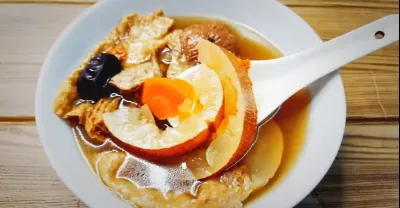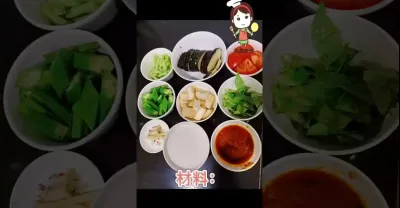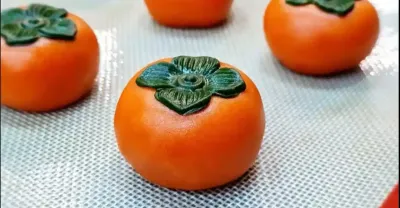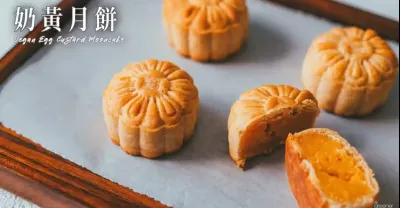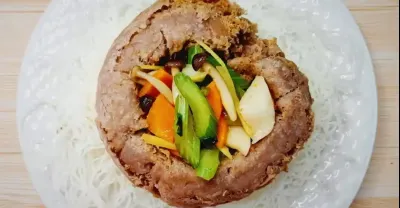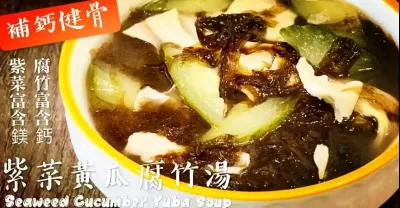Vegetarian Seaweed Beancurd Rolls在家製作素鴨 (紫菜腐皮卷)
 省電俠 19K 反饋
省電俠 19K 反饋Okay, here's an article about making Vegetarian Seaweed Beancurd Rolls (素鴨, Su Ya) at home, aiming to be informative and accessible. It avoids the title itself, as requested.
This Chinese vegetarian dish, often called "mock duck" or "vegetarian duck," is a clever and delicious way to enjoy the savory flavors traditionally associated with duck, without the meat. It's made using beancurd skin (also known as tofu skin or yuba), meticulously rolled with a flavorful filling, then pan-fried or steamed to perfection. While it might seem daunting, making it at home is surprisingly manageable with a little preparation and guidance.
The star of this dish is undoubtedly the beancurd skin. You'll find it dried or fresh at Asian grocery stores. Dried beancurd skin needs to be soaked in warm water for at least 30 minutes, or even longer, until it's pliable and easy to work with. Fresh beancurd skin is ready to use but still benefits from a quick soak to ensure it’s moist and easily rolled. The thickness can vary; thinner sheets are easier to roll but may tear more readily.
The filling is where you can really customize the flavor. While traditional recipes often include mushroom (often shiitake or wood ear) and soybean paste, the beauty of this dish lies in its adaptability. A common base includes finely chopped mushrooms (rehydrated if dried), finely diced carrots, celery, and shiitake. Soybean paste (also known as doubanjiang or fermented bean paste) provides the umami depth, often enhanced with a touch of soy sauce, sesame oil, and Shaoxing wine (Chinese cooking wine). A little sugar balances the savory notes. You can also add other vegetables like water chestnuts, bamboo shoots, or even finely chopped peanuts for texture. Some recipes include a small amount of chopped tofu for extra protein.
To assemble, lay out a sheet of beancurd skin. Spread a thin, even layer of the filling across the lower half, leaving a border around the edges. If using multiple sheets, layer them on top of each other – this creates a more substantial roll. Carefully roll the beancurd skin tightly from the bottom edge upwards, keeping the roll as compact as possible. Repeat this process until all the sheets are used.
Once rolled, wrap the rolls tightly in plastic wrap and refrigerate for at least 2 hours, or preferably overnight. This allows the flavors to meld and the rolls to firm up, making them easier to slice and cook.
For cooking, you have several options. Pan-frying in a little oil creates a crispy exterior and juicy interior. Steaming is another popular method, retaining more moisture. After cooking, slice the rolls into roughly 1-inch thick slices.
The final touch is the sauce. A classic sauce combines soy sauce, sugar, rice vinegar, sesame oil, and a touch of chili oil. You can adjust the sweetness, acidity, and spiciness to your preference. Garnish with chopped scallions or cilantro for added freshness and color.
Making this dish is a wonderful way to explore vegetarian cooking and recreate a beloved classic. Don』t be afraid to experiment with different fillings and sauces to create your own unique version of this flavorful "mock duck." The effort is well worth it for a satisfying and delicious meal.
 喬君錦 6
喬君錦 6 洪文強 149
洪文強 149 強壯人 347
強壯人 347 喬君錦 3
喬君錦 3 省電俠 11
省電俠 11 洪文強 49
洪文強 49 洪文強 35
洪文強 35 喬君錦 68
喬君錦 68 喬君錦 0
喬君錦 0 洪文強 113
洪文強 113 大寶貝 0
大寶貝 0 省電俠 • 420次觀看
省電俠 • 420次觀看 省電俠 • 960次觀看
省電俠 • 960次觀看 洪文強 • 420次觀看
洪文強 • 420次觀看







